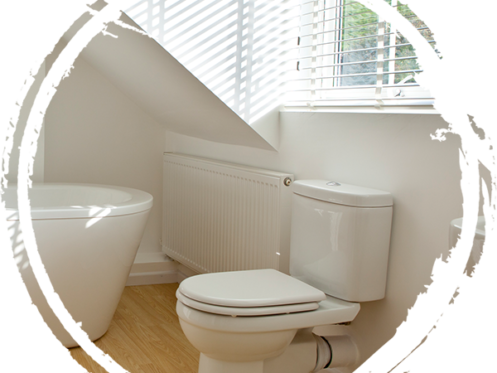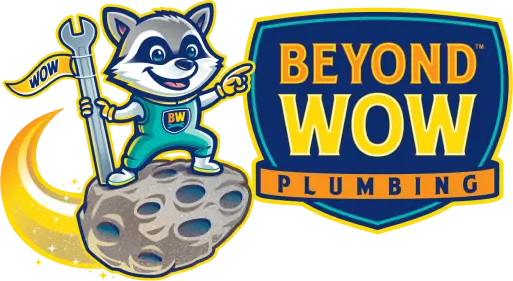
Plumbing Questions: Will Vomit Ruin Plumbing?

Among the most repulsive issues is finding out that your water isn’t going down the drain — you’ll probably have to deal with a slimy and foul-smelling substance. But did you know vomit could be the actual cause of the clog?
Indeed, throwing up in a toilet causes clogging. Our longstanding experience in plumbing has shown us that people who often vomit in their drainage systems, especially bathtubs, sinks, and showers, report higher instances of clogged drains.
However, attributing the clog to vomit isn’t straightforward; there are a few caveats.
Dealing with a clogged sink, shower, or toilet? Call Beyond Wow at 512-365-8866 to schedule plumbing repair today.
When Vomit Clogs Your Drainage
Not all vomit causes clogs in drainage pipes. Vomit that’s composed of saliva and stomach fluids doesn’t cause clogging since it easily washes away. Besides, if you vomit in your toilet, you won’t experience clogging.
Your toilet is well-designed to flush out solid particles. And so, although most people dislike having their faces close to their toilet bowls, we strongly recommend doing so.
Furthermore, you can’t clog your drainage when you’ve vomited only once or twice. As you’ll see below, clogging is dependent on the frequency and quantity of vomiting; the more you vomit, the higher the chances of clogging.
In contrast, regularly vomiting in bathtubs, sinks, and showers causes clogging if your vomit has larger-sized food particulates. If you rinse pet vomit down the drain, be careful of hair. Hair is a notorious culprit for blockages. It binds to grease and other gummy substances, forming clogs.
On the other hand, vomited food scraps usually settle below your sink’s pipeline. As more vomit flows into your drain, the scraps will catch on the sediment until a bulky mass clogs the drain.
While vomit-borne clogs are rare, their impact can be profound. Some findings have shown that institutions with bulimic people often incur high plumbing costs attributable to blockages.
This is less likely for those with conditions that cause frequent vomiting, like chemotherapy, because nausea associated with the treatment typically prevents them from eating large amounts of food. So, if your household members regularly vomit in sinks or tubs, you might experience a sewer line problem.
4 Signs Your Drainage Pipes Could Be Clogged
Eventually, the vomiting will cause your pipes to clog. Recognizing this issue early will help you address it before backups occur. Watch for these things:
1. Dark Water
If your drainage system is clogged, water will start backing up in your showers, sinks, or tubs. This happens due to the obstruction created by the accumulated debris.
In contrast to flooding caused by a leaking pipe, the water won’t be clear. Since it has lots of accumulated vomit mixed in, it may be murky, foul-smelling, and unpleasant-looking. Please note that this water may contain untreated sewage, so use caution when dealing with it.
While a simple pumping can help, remember that it won’t clear the clog, especially if debris has accumulated in the drains for some time. Therefore, we recommend having an expert inspection to determine the cause and fix the issue.
A professional can snake the drain and ensure that all accumulated debris is removed.
2. Slow Drainage
Because of the accumulated vomit, you’ll start experiencing slow drainage. Check for standing water in sinks and tubs each time you run water.
We strongly advise parents to inspect their children’s room drainage systems. Most bulimic teenagers hide their conditions. Inspecting the systems frequently can save you plumbing costs as well as your teenager’s well-being.
Since slow drains can also be caused by long hair, consider choosing a tub drain that’s designed to catch and remove hair.
It’s worth noting that if all your home’s drains have slowed down, your main line may also be clogged. A clog in this portion of the plumbing is best cleared by a professional.
3. Bubbling Sounds
Because a clogged main line prevents your drains from functioning correctly, you may notice some peculiar side effects when using your plumbing system. Air bubbles and water can emerge when running a faucet, flushing a toilet, or using a washing machine.
This debris rattling can create gurgling or bubbling sounds in your pipes. Because sound travels erratically through pipes, these disturbances may appear to originate from plumbing fixtures, walls, adjacent rooms, or even the floor or ceiling.
The most frequently reported sound is a bubbling noise when using a drain. You may also hear peculiar hissing, bubbling, or dripping sounds.
If your drainage system is nearly completely clogged, it may take some time for items to drain. Therefore, you may continue to hear strange sounds long after you stop using a drain.
4. Obstructed Plumbing Fixtures
Nearly no wastewater will pass through the pipe if your jammed sewer line goes undetected for too long. When this happens, your drains will no longer function. Instead of experiencing slightly slow drainage, your fittings will appear to stop draining simultaneously.
Keep in mind that all the fittings in your property are interconnected. A clogged sewage line will obstruct your entire property’s drainage system. For instance, your tub can become flooded or clogged after using the kitchen sink.
On the other hand, while your upper-floor toilets may be working fine, your downstairs sink may appear clogged.
Other drains affected by the sewer line blockage include shower and tub drains. This is because they sit at a relatively lower level than kitchen sinks or other sinks. They may fill with wastewater when the backup issue is significant.
How To Clear an Obstructed Sink Drain Caused By Vomit
Knowing the signs of a clogged drainage system is only one piece of the puzzle; solving the problem is what counts. As mentioned earlier, while the puking issue is usually trivial, it can have profound issues when done on a large scale.
For instance, if you have bulimic teenagers or are constantly hosting parties where groups of people vomit, you may encounter clogged drains or sewer line issues.
Most people resort to DIY solutions, which are effective for minor blockage problems. For instance, if you’ve vomited in your sink for the first time, pumping the substance using a simple plunger and wiping it off can save the day.
However, dealing with a clog (accumulated waste, particles, or dirt) requires the input of an expert. Therefore, we recommend calling a plumber.
Keep in mind that although you might know how to unclog a standard drain, you may not have the necessary equipment to unclog a sewer drain. The further down in the drain the clog resides, the more it takes a professional to remove.
Professionals have heavy-duty central sewer line cleaners and other tools that allow them to remove any clog. They have cameras to determine the nature of the issue, and the knowledge and experience to identify the severity of the problem.
Simply pouring sewer line cleaners down a toilet won’t help you identify and repair tree root growth or other severe plumbing issues.
Having a professional evaluate the entirety of your plumbing system will ensure that the actual problem is resolved. Depending on the circumstances, you may need to completely replace your sewer pipes, which might require extensive landscaping and plumbing work.
Are you struggling with clogging issues? Do you suspect that it’s because of vomit?
Contact Beyond Wow today to have them fixed. We specialize in plumbing installations, leak detections, drain services, and sewer work in Austin, TX.
Ready for Out-of-This-World Plumbing Service?




